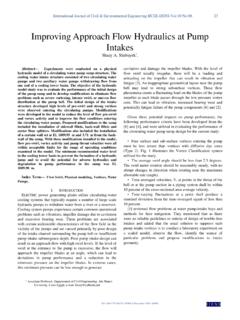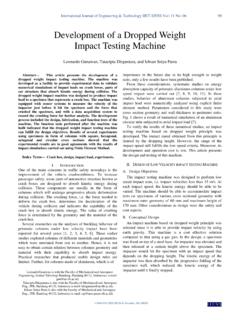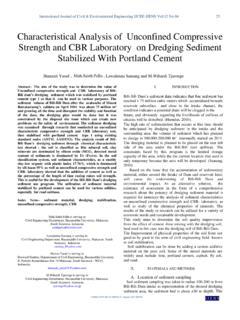Transcription of Design of a Simple CMOS Bandgap Reference - IJENS
1 International Journal of Electrical & Computer Sciences IJECS- IJENS Vol:10 No:05 6 102505-6060 IJECS- IJENS October 2010 IJENS I J E N S Design of a Simple cmos Bandgap Reference Shopan din Ahmad Hafiz1, Md. Shafiullah2, Shamsul Azam Chowdhury3 Bangladesh University of Engineering & Technology Abstract This paper describes the Design of a Bandgap Reference , implemented in m cmos technology.
2 The circuit generates a Reference voltage of It can operate between 20 C & 70 C. Total variation of Reference voltage within the temperature range is which is of the Reference voltage. This circuit works in a current feedback mode, and it generates its own Reference current, resulting in a stable operation. A start-up circuit is required for successful operation of the system. Index Term Analog Integrated Circuit, Bandgap eference, cmos , Temperature Independence.
3 I. INTRODUCTION One of the essential building blocks of many analog circuits is a voltage Reference , which should exhibit little dependence on supply and process parameters and a well defined dependence on temperature. As a well-established Reference generator technique, Bandgap Reference is most popular for both Bipolar and cmos technologies. The principle of the Bandgap circuits relies on two groups of diode-connected BJT transistors running at different emitter current densities.
4 By cancelling the negative temperature dependence of the PN junctions in one group of transistors with the positive temperature dependence from a PTAT (proportional-to-absolute-temperature) circuit which includes the other group of transistors, a fixed DC voltage is generated which doesn t change with temperature. The resulting voltage is about V, depending on the particular technology, and is close to the theoretical band gap of silicon at 0 K.
5 [1][2] Generally a Bandgap Reference circuit consists of a supply-independent biasing circuit, a diode connected BJT transistor generating a voltage with negative temperature coefficient, a PTAT circuit and some kind of feedback mechanism to improve the performance. In this paper, a measurement and addition circuit is implemented to output the Reference voltage. Current mirrors with current feedback mechanism are used to minimize supply dependence.
6 Feedback mechanism is implemented by a Simple 2-stage single-ended differential amplifier. The circuit has been optimized for minimum temperature and supply dependence with simplest implementation. A. Bandgap Reference A Reference voltage is generated by adding two voltages that have temperature coefficients of opposite sign with suitable multiplication constants. The resulting voltage obtained is independent of temperature. The diode voltage drop across the base-emitter junction VBE, of a Bipolar Junction Transistor (BJT) changes Complementary To Absolute Temperature (CTAT).
7 [3] Whereas if two BJTs operate with unequal current densities, then the difference in the base emitter voltages, VBE, of the transistors is found to be Proportional To Absolute Temperature (PTAT). The PTAT voltage may be added to the CTAT voltage with suitable weighting constants to obtain a constant Reference voltage. II. CIRCUIT DESCRIPTION The circuit is drawn using software named COHESION DESIGNER. The block diagram of the circuit is given below: Fig. 1.
8 Block diagram of Bandgap Reference circuit A. Bandgap Core This is the most important part of any Bandgap circuit. This part produces Reference voltage. The schematic of the circuit is given below: Fig. 2. Bandgap Core Node A and Node B are actually input to the operational amplifier. Voltage of these two nodes is equal. IREF is a Reference current source which is actually the output of operational amplifier. R1 R2 and R3 are n-well resistances.
9 Two transistors are actually vertical inherent BJTs of cmos process. From the schematic of the circuit it can be found that there are two branches in this core circuit. Initially current in branch1 (branch having R1 and R3) is higher than that of branch2 (branch having R2). At steady state, current through each branch becomes equal. Therefore voltage of node A and node B becomes equal. Since voltages of node A and node B are equal, therefore the voltage across the resistor R2 is 2 = I2 R2 = 2 1 3 R2 Start Up Circuit Bandgap Core Operational Amplifier International Journal of Electrical & Computer Sciences IJECS- IJENS Vol:10 No.
10 05 7 102505-6060 IJECS- IJENS October 2010 IJENS I J E N S = VT ln(n) 2 3; [n= number of parallel BJT s] = VT ln(4) 2 3 ; [n = 4 for this circuit] VT is thermal voltage, whose expression is given as, VT = .So VT is directly proportional to absolute temperature (T).
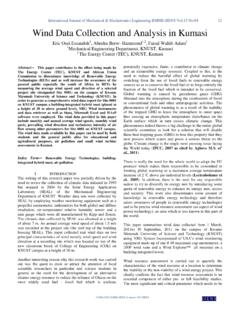
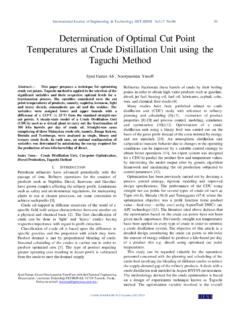
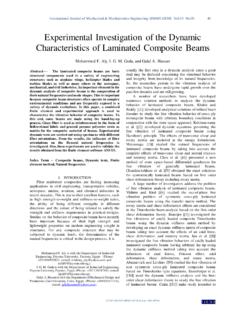
![IJENS-RPG [IJENS Researchers Promotion Group] ID: …](/cache/preview/1/7/b/a/8/0/e/3/thumb-17ba80e3168c7f59c03bc21e79d7d2ee.jpg)

